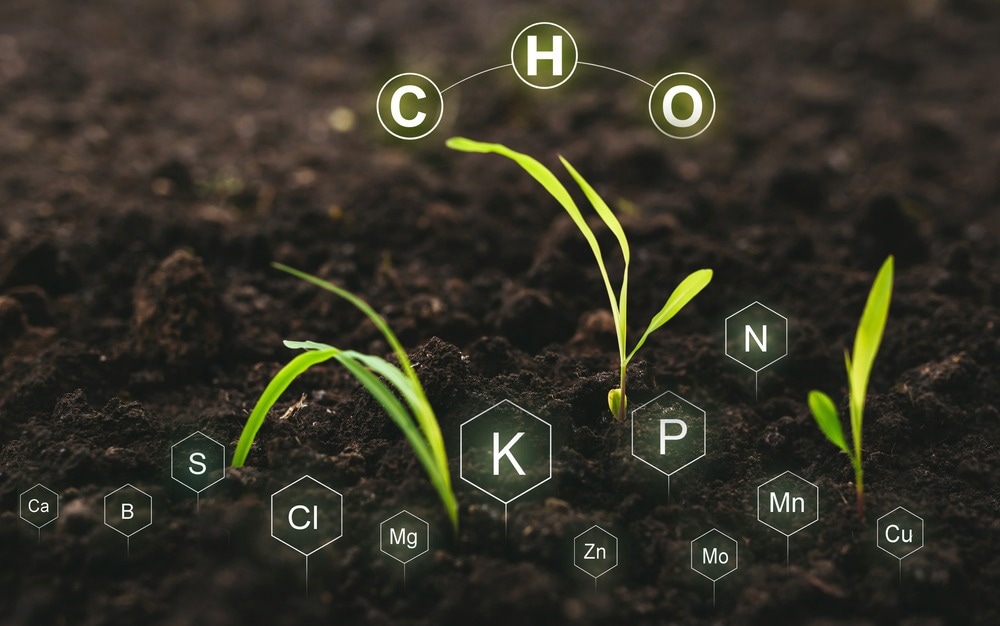Developing enhanced efficiency fertilizers is pivotal for achieving sustainable agriculture. In a study published in Carbohydrate Polymers, nanocellulose fibers distributed in biodegradable polymer frameworks were examined for nutrient delivery.

Study: Charged-cellulose nanofibrils as a nutrient carrier in biodegradable polymers for enhanced efficiency fertilizers Image Credit: Miha Creative/Shutterstock.com
The Importance of Enhanced Efficiency Fertilizers
Efforts across the world are taking place to improve fertilization technologies, decrease environmental damage and boost nutrient supply via sustainable agricultural processes.
The development of Enhanced Efficiency Fertilizers (EEFs) was an important breakthrough in this regard.
EEFs are fertilization materials that have the potential to minimize environmental loss of nutrients while enhancing the nutrient supply to the plant. EEFs may either slow the discharge of nutrients for absorption or ensure the conversion of nutrients into less sensitive states, all while limiting environmental consequences.
EEF frameworks must therefore be able to decompose in the surrounding environment without releasing harmful chemicals into the ecosystem.
Nanocellulose in Enhanced Efficiency Fertilizers
Nanocellulose is a biodegradable polymer that shows good prospects for use as EEF matrix, and is desirable because it reduces pollution associated with other of non-degradable polymers.
While nanocellulose fiber products are expensive, a growing industrial use and properties of nanocellulose offer various new opportunities for nanoscience, which could help revolutionize the agricultural industry.
Chemical Functionalization of Nanocellulose
Chemical functionalization of the surfaces of nanocellulose fibers has been explored for improving interactions between nutrients and nanocellulose fibers and their compatibility with polymeric frameworks.
These improved connections reduce the number of voids, effectively limiting water diffusion and increasing nutrient supply sustainability.
Various methods for functionalizing nanocellulose particles have been explored. In this study, the team concentrated their efforts on chemical functionalization approaches that could be carried out in aqueous and eco-friendly solvents.
Functionalization of nanocellulose fiber surfaces using TEMPO-moderated oxidation and quaternary compounds were the chemical modification techniques employed for boosting the negative and positive charges of nanocellulose fibers, respectively.
The Focus of the Research
The research team believed that negative and positive charges on the nanocellulose surface would strengthen the electrostatic contacts among nanocellulose and the nitrate and potassium nutrients, thereby slowing down the release of nutrients.
The research focused on understanding how surface functionalized nanocellulose fibers increased compatibility with the biodegradable PHB/starch framework, as well as how it affected the nutrient release process and the degradation mechanism.
This approach opens up new opportunities for establishing sustainable agricultural practices and developing effective fertilizers to maintain a secure food supply.
Important Findings
The interactions of nanocellulose fibers with the nutrient ions and the polymer framework were improved by functionalizing the fiber surfaces to enhance their positive and negative charges.
Compared with the direct administration of pure potassium nitrate, which is entirely water-soluble, the developed composites demonstrated a considerable decrease in the release of nutrients. The composites showed delayed availability of nutrients at high salt concentrations as well.
The team connected the nutrient ions and the charged spots on the nanocellulose fiber surface. Due to the elevated salt content, however, it was barely discernible in the different analysis techniques.
The thermoplastic starch (TPS) influenced the homogeneity of the frameworks. The findings revealed that water uptake into the composites might be quicker via pores and voids. The breakdown of the polymeric composite facilitated additional nutrient discharge from the inner sections of the polymeric frameworks.
Positive ions of nanocellulose fibers improved the biodegradability of the PHB/TPS framework more than the negative ions. Nevertheless, the PHB/TPS framework showed considerable degradation under the influence of both cationic and anionic nanocellulose fibers.
The researchers also examined the benefits provided by enhanced efficiency fertilizers in agricultural management. The use of EEFs enabled standard fertilizer amounts to be separated into multiple phases to minimize fertilization waste. This installation, however, resulted in a rise in labor and related expenditures.
Since EEFs make nutrients accessible for longer, another approach would be administering all the required nutrients at once. Considering the ecological benefits of minimizing leaching and volatilization procedures is also pertinent.
The toxic nature of the composites toward soil microorganisms and plants is a subject for future research.
Reference
França, D., Siqueira, G., Nyström, G., Clemens, F., Souza, C. F., & Faez, R. (2022). Charged-cellulose nanofibrils as a nutrient carrier in biodegradable polymers for enhanced efficiency fertilizers. Carbohydrate Polymers. Available at: https://www.sciencedirect.com/science/article/pii/S0144861722008396?via%3Dihub
Disclaimer: The views expressed here are those of the author expressed in their private capacity and do not necessarily represent the views of AZoM.com Limited T/A AZoNetwork the owner and operator of this website. This disclaimer forms part of the Terms and conditions of use of this website.